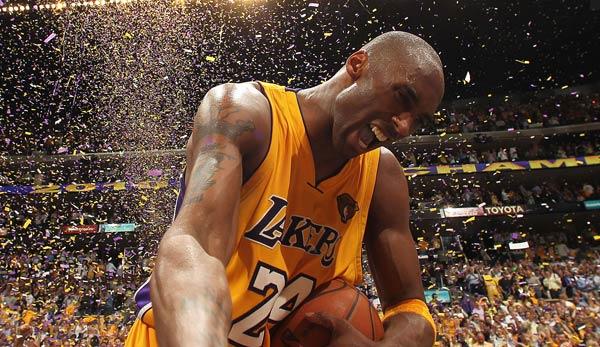US-Sport
NBA: Topic week: Stats-Guru Engelmann on GMs, Kobe, Schröder and Las Vegas
Jeremias Engelmann is the inventor of ESPN’s Real Plus-Minus (RPM) player rating system and once worked for the Phoenix Suns.In the SPOX interview, he talks about his way from Karlsruhe to the NBA, conflicts between GMs and data analysts and the use of statistics for teams and players.He also analyses Kobe Bryant’s Defense, overrated stars, the trade between the Cleveland Cavaliers and Boston Celtics, and gives his forecasts for the 2017/18 season.
nearby
SPOX: The first question has to be natural: How does a student from Karlsruhe get hired by an NBA team?
Engelmann: I studied computer science and played basketball myself in Karlsruhe.Towards the end of my studies, I started to get interested in metrics like ESPN’s Player Efficiency Rating (PER) and to think about how that might be improved.I then started to develop my own system for the evaluation of players, which was far too complicated in the beginning and not so great at all (laughs).
There was a metric at the time that caused quite a stir, the so-called Regularized Adjusted Plus-Minus (RAPM).Their developers were hired by the Washington Wizards and were not allowed to publish anything.So I just tried to rebuild it with my one semester statistic and my terribly bad laptop.
Since no one else posted this publicly at the time, I suddenly had a website that was relatively popular, and was also in the APBR Metrics Forum[a discussion forum about NBA statistics, annotations, etc.].d.Red] active.A friend recommended me to the Phoenix Suns.
SPOX: How did you come up with the idea for your own metric, the Real Plus-Minus?
Engelmann: Even before the Suns contacted me, I had tried to offer the RAPM to German basketball and football teams.I was then invited to an interview by three Bundesliga teams, including Borussia Mönchengladbach.There they had a pretty cool internal rating system: Scouts carried subjective “stats” for dribbling ability, shooting technique etc. for all kinds of youth players.points from 1 to 10.So I thought that it would be useful not to leave such information completely unused – as is the case with RAPM – and to feed it into the algorithm instead.
SPOX: Especially in football, pure plus-minus statistics are particularly problematic…
Engelmann: Yes, because they work best in sports where many points fall and are changed a lot.In football, you don’t really have either.However, I did calculate it anyway and the results weren’t that bad.Messi and Ronaldo were in first and second place with a huge gap.But for a really good metric you would have to include as many other statistics as possible: pass rate, duel quota, shots, etc.
SPOX: In basketball, that would be the box score numbers.
Engelmann: Exactly.From the boxscore stats you can calculate a starting value for each player, which is then linked to the plus-minus data.The advantage of the plus-minus numbers is that they “see”everything that happens in the field.Especially for the Defense, there are hardly any statistics.For example, if a player gets many steals and defensive rebounds, but defends less and less when he is on the field.Of course, it is very difficult to see this in the boxing score.
Moreover, a metric like RPM does not contain any subjective assessments.Just because I’m e. g.Draymond Green is a good defender, I don’t arbitrarily change variables to make him stand out in the ranking.When John Hollinger built his PER in the 90’s, he allegedly – or so it is said – screwed himself to the factors until Michael Jordan came first.This, of course, does not lead to the most accurate evaluation system possible.
SPOX: What is the fundamental advantage of statistics over the Eye Test?Can’t I see more when I just watch the games?
Engelmann: On the one hand, it is of course hardly possible to actually see every game, especially in the NBA.There are 1230 games per season.Even for hardcore fans, it’s probably hard to watch the 82 games of their own team at all.But if someone sat down every day, watch games for eight hours and build their own subjective rating system….I imagine that this might be better than RPM.
On the other hand, I have the feeling that human perception is often distorted.For example, when people gamble a lot of NBA2K and a player goes off, they may perceive it in reality as better than it actually is, similarly to the players who often appear in highlights that are spectacularly dark, which you see more often as a result.Stats often provide a more objective and accurate assessment.
Besides, especially in the defensive you don’t perceive many things exactly.You would probably have to watch games at half speed to see what each player is doing right or wrong at any time.
SPOX: Which players have a particularly wide range of perceptions, who is particularly over- or undervalued in the public eye?
Engelmann: Kobe Bryant has been in one of the All-Defensive Teams twelve times.He often only put a lot of energy into the defense if the Lakers played on television or if he had a particularly well-known opponent.All in all, however, the Lakers have defended much better in most years without him on the field.That can’t be possible.There is a big discrepancy, because often it’s just looking at the ball.Things like Help Defense or redoing after a ball loss are then neglected.
A current example would be Avery Bradley.He also plays a good defense on the ball – that looks rather stressful for the player who is holding the ball, because Bradley “sticks”to his opponent.But he’s not the greatest.So opponents can often just throw them over him and this is of course a problem for his Help Defense as well.But who pays attention to the help defense of a shooting guard when watching a game with friends?
SPOX: Eye tests and stats are usually not as far apart from each other in the offensive.It is easier to see who is making a major contribution and statistics can measure this much more accurately.Are there nevertheless examples of a similar discrepancy between stats and public perception in the offense?
Engelmann: I’m not as sure as in defense.But I think that volume scorers, which simply score a lot of points per game, are overrated by many fans.At least compared to players who produce good statistics per minute, but play less.For me, Amir Johnson was always the prime example, who always had very good stats per minute.But for many people, the numbers per game still seem to be the deciding factor, even though that doesn’t matter much in my world.
Cody Zeller and Otto Porter are also players who are very efficient but still underrated.Porter was last season e. g.one of the league’s most efficient throwers.Such players may still be undervalued in comparison to players like Carmelo Anthony, Kyrie Irving or DeMar DeRozan, who simply hit a lot of points.
Kobe Bryant is another example.His points often looked complicated because he made life difficult for himself.Lots of isolation, pump fakes, throws against three defenders…That looks cool when it goes in.But it is, of course, the question of whether that was always necessary.
Page 1: Engelmann on the rating of players, Messi, Ronaldo and Kobe Bryant
Page 2: The Eye Test, Mr.Triple Double and Basketball Guys vs. Analytics Guys.
Page 3: Overrated Stars, Jokic’s Offensive, Crowders Value and Schröder’s Weaknesses
Page 4: Disappointing Celtics, Embiids Injuries and a Secret Favorite in the East


















You must be logged in to post a comment Login